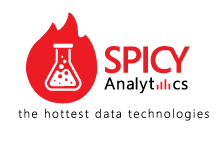Spicy Analytics Medical Intelligence
Today, one of the biggest challenges is to extract "relevant data" from large amounts of data. Almost every major corporation, but most importantly in healthcare, hundreds of thousands of data are generated daily, where a record can have hundreds of descriptors. So not only a large amount of record is a problem, but a big dimension and interpretation.
However, these data can reveal relationships that can not typically be investigated on a limited amount of data. Though understanding of the diseases, they need to be much more complex algorithms to map their interrelations, which places both researchers and health analysts at a great job.
What is the best in our solution?
SAMI provides data science support for healthcare professionals in the following areas:
- Based on descriptive parameters (illnesses, therapies, bio parameters) we can estimate future events such as complications, survival or treatments.
- Within the indications, homogeneous patient segments can be identified which are most needed for the particular purpose. This may be a non-treated patient or a group of high-risk patients.
- By recognizing therapeutic differences, communication or recommendation can be changed and further strengthened.
- The most important stages of the progression of the disease become recognizable.
Overall, these scientific-grade analyzes provide personalized assistance in daily patient care.
Some of our research to date and during 2018:
- Segregation of patients diagnosed before and after diagnosis of heart failure and search for typical routes.
- Diagnosis of patients diagnosed before and after diagnosis of renal failure and determination of typical pathways.
- Determining the Surgical Risk of Nutrition.
- Determine the parameters for successful recruitment of clinical research.
- PCOS patients (polycystic ovary syndrome) before and after diagnosis, as well as discovering typical routes.
- Separation of patients with acute respiratory distress syndrome before and after diagnosis and determination of typical pathways.



